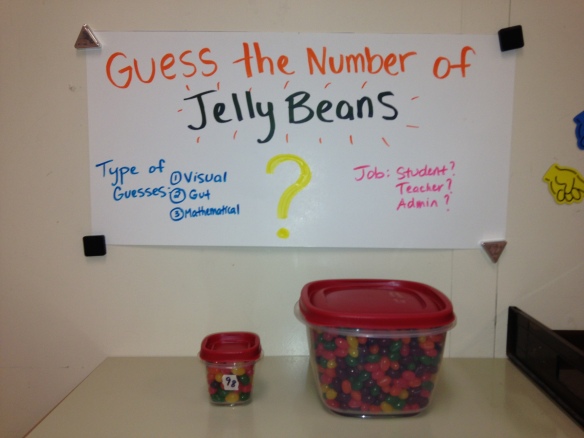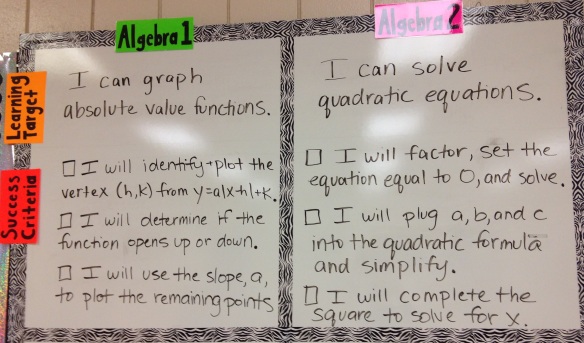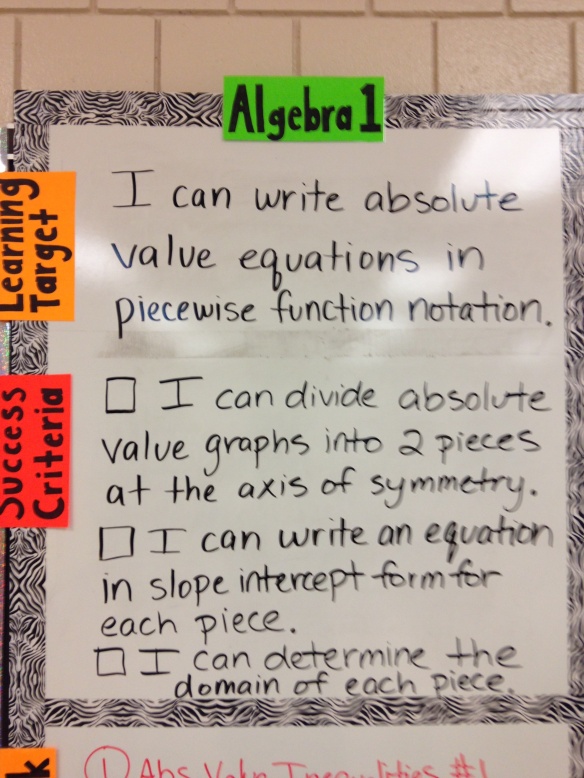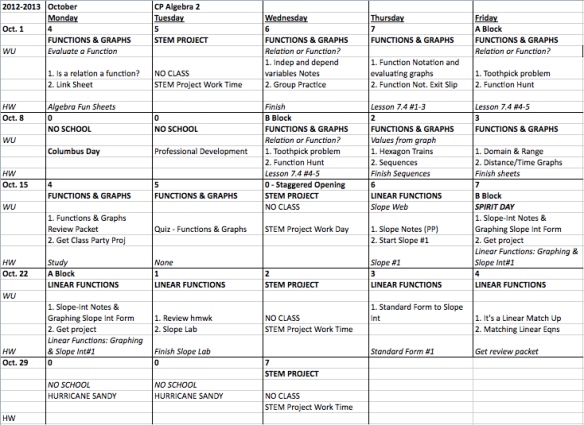Get out your calendars and mark them now! Twitter Math Camp 2017 is being held from July 27th-30th at Holy Innocents’ Episcopal School in Atlanta, Georgia.
Having just returned from my 4th Twitter Math Camp (TMC) experience in Minneapolis, I feel the need even more to book my entire summer plans around this camp. I like to spend time in the summer with my family and friends; go to the beach; read a book for fun; nap; go to the drive-in, etc. But I also NEED to spend four days in person with my MTBoS family. The people and sessions at TMC invigorate my passions and spirit and convince me that I can conquer anything in the upcoming school year.
I can’t possibly recap everything I took away from TMC16, but here are some of my favorite takeaways. I hope they become some of your favorites too! Grab a drink, there are a lot 🙂
Favorite Pre-TMC Outing: After arrival, I adventured to the Minnehaha Falls with a small group. The weather wasn’t the best, but we had a fabulous time exploring the falls and walking to the confluence of the Mississippi River and Minnehaha Creek.
Favorite New Desmos Calculator Feature: Desmos now has audio capabilities for visually impaired and blind students. Use Command F5 for the voice option, and Option + T for the audio trace. Desmos will read the expression being typed, and then play a graph used a pitched audio representation. Kudos to Desmos for striving to be fully accessible to all users!
Favorite New Desmos Activity Builder Feature: Card sorts! Ask Desmos and you shall receive! By turning on the “Labs” option once you’re logged into Desmos, you now have the option to build card sorts within the activity builder platform. I made a cart sort for Quadratic Equations, and I can’t wait to make more and then also steal from the crowdsourced list. My group loved that we can input card sorts already created; ask students to sort in more than one way; narrow responses by asking for a specific number of cards in a pile; and ask students to analyze why someone else sorted the cards a different way. The possibilities are truly endless, and you can check out the card sort bank here.
Favorite Passionate Educator Title: Chief Evangelist. In her keynote speech, Sara VanDerWerf challenged us to become “Chief Evangelists” for our passions in math education. Sara said, “Sharing your best with others who can benefit is a responsibility and opportunity that falls to everyone” and “To be good at evangelizing, you’re gonna have to practice.” You also need to prepare mini-elevator speeches for each of your passions so you’re ready to share, and tweak them depending on your audience (students, parents, teachers, leaders). I’m going to spend some time this summer narrowing down my list of math education passions to figure out what I want to advocate for.
Favorite Dorm Life: While not all aspects of Dorm Life at Augsberg College were glamorous (looking at you, shower stalls), I had a complete ball living with some TMC-ers for four days. Waking up and having morning bathroom chats about math ed, doing the wobble in common areas late at night, and watching the bachelorette with a huge crew were all completely memorable TMC experiences.
Favorite ELL Strategy: The snowball activity is a great way to get students writing, reading, and speaking in math class. Have students answer a prompt on paper, crumple up the paper, and throw it somewhere in the room. Each student then finds a new paper,
reads the response, and either 1) Adds a new idea 2) Contributes 3) Corrects something
written. After going through the cycle three times, ask students to share ideas out loud
from whatever paper is in front of them. It’s anonymous, non-threatening, and fun for students. And again, it provides them with an outlet for individual think time, following by writing, reading, and speaking. Priceless.
Favorite PD Strategy: To assess participant’s understanding during professional development, I highly recommend using the “Filling in Circles” strategy modeled by Michelle. Start by identifying the key concepts of the session, or in our case, the barriers to implementing responsive stations. Then, have participants continually reflect on the topics and fill in the circles as their learning and understanding grows. Facilitator is able to see what topics need to be discussed more, and participants are able to ask better questions about what they want/need to know. Very easy and very powerful.
Favorite Mapping Tool: Popplet. Use it as a mind-mapping tool or to help students think/learn visually. We used it to map skills and identify gaps.

Favorite Restaurant: Pizza Luce! I had Baked Potato pizza both times we went there because it was just SO GOOD. They were also very accommodating of our large groups.
Favorite Shared Experience: Jonathan talked about how he created a shared
experience in his school by creating “Varsity Math” for his calculus and statistics
students. He branded them with shirts, stickers, and inspirational speeches; and the kids just LOVED it. They bought in. They felt like they were part of a special community… because they were. Jonathan even graciously invited all of TMC16 to join the team. How can we create shared experiences for the students in our own communities?
Favorite JLV Reminder: In Jose Vilson‘s keynote speech on “TMC16, Race, and What We’re Not Talking About,” he challenged us to lead hard conversations and be okay with feeling uncomfortable. He also reminded us that we have students who are much more capable of talking about this stuff than we are; often because they have less filters. He told us to “get out of their way” but provide an outlet to let it happen. This was a much needed reminder for me, because I often feel like I should/need to have all the answers, so when I don’t, I avoid the conversation. I know I need to work on this, and my students can probably help me. Watch Jose’s keynote here.
Favorite “Getting Triggy With It” Activity: Kristen led an excellent session on how to make trig and the unit circle not a mystery. Grab all her resources here! My favorite activity was using one triangle drawn on patty paper to construct the unit circle. Simple approach but nicely shows how all the key points are determined.
See Rachel’s tweet for pictures of activity in action:
https://twitter.com/rdkpickle/status/754408434456485892
Favorite Verb: Edmund Harris and Chris Shore reminded us that modeling is a verb. It’s something kids should be doing, not something given to them. Modeling is a: Creative. Active. Process.
Favorite Physical Activity: Sara graciously brought her Backwards Bike to camp, and let me ride it as much as I wanted. If you’re not familiar with backwards bikes, watch this video. Even though I came home with several bike battle wounds, I had an absolute blast trying to ride this thing. Even after just a few times, I felt like I was making progress and coming up with new strategies to try out. Now I’m off to find someone to make one for me.
Favorite Project: Sam shared a project he does with students called “Explore Math” so they can explore math outside of school and see its beauty. He wrote about the project on his blog and shared the website he asked students to explore. It’s a “low stakes, high reward” activity. Some kids will do the bare minimum, but others will take it to levels that Sam wasn’t even expecting. His recommendation is to keep it open, keep the mini explorations mini, and don’t compare projects.
Favorite Pre-Assessment: Don’t have one yet, need to make them! Michelle led us through an eye-opening morning session about identifying the gaps in students’ understanding and then using responsive stations to address those gaps using differentiation. I’m excited to follow Michelle’s instructions to create appropriate pre-assessments. There should only be one skill per question and as short as possible. Focus on what pre-skills students need to know in order to be successful with new content, don’t worry about the would-be-nice-to-know. The goal of the pre-assessment is so you can figure out where students are at, and provide them with learning opportunities if they don’t know, and learning opportunities if they do know (enrichment). Elissa wrote a great recap of the entire three days.
responsive stations to address those gaps using differentiation. I’m excited to follow Michelle’s instructions to create appropriate pre-assessments. There should only be one skill per question and as short as possible. Focus on what pre-skills students need to know in order to be successful with new content, don’t worry about the would-be-nice-to-know. The goal of the pre-assessment is so you can figure out where students are at, and provide them with learning opportunities if they don’t know, and learning opportunities if they do know (enrichment). Elissa wrote a great recap of the entire three days.
Favorite Call to Action: Tracy Zager‘s keynote speech titled “What do we have to learn from each other?” was inspiring and community-driven. She stressed that we need to stop pitting content and pedagogy against each other; we need to stop pitting elementary and high school teachers against each other. Neither of these things is productive for our community. We all have an important role in building our students’ conceptual understanding, and we need to work together to get it done. Tracy’s call to action is to analyze whom you are following on Twitter, and make sure you have a variety of contacts you can reach out to for support and to ask questions. Watch Tracy’s keynote here.
Favorite Fraction Problems: After Tracy’s talk, I pushed myself to attend Brian Bushart‘s session on fractions: a place I knew I would feel out of my comfort zone as a high school teacher. One of the reasons Brian said fractions are so hard for students, is due to practices that simplify or mask the meaning of fractions.
By finding a common denominator, you aren’t comparing fractions anymore. You’re now only comparing the whole number numerators. Cross multiplying is an example of masking; you’re getting rid of the fractions and comparing whole numbers. This masks the fact that you’re still comparing two fractions. Neither of these strategies takes into account the size of the fractions and therefore rob students of sense making. Brian then shared a bunch of strategies for how to deal with this, and I will lead you directly to his documents to learn more.
Favorite Fraction Big Idea: Another huge idea that Brian threw at us is the difference in how whole numbers and fractions are treated as adjectives and nouns. Look at the slides below for comparison.
Whole Numbers:
Fractions:
I’ve never really thought about it this way before, so this was a *mind blown* moment for me, and others at my table. Many students don’t actually gain enough understanding about fractions to realize that fractions are actually numbers and can be represented on a number line. They get stuck at adjectives (1/2 a cake) instead of moving onto nouns. This is where we need to get!
Favorite “Make It Stick” Strategy: In her session, Anna talked about the various ways she uses strategies from Make It Stick in her classroom. My favorite strategy she discussed was Calibration. The goal is to “replace a subjective experience or feeling with an objective gauge outside ourselves.” It stems from the “Illusion of Knowing” in that we think we know something, but really we only have a familiarity with it. The book recommends providing more opportunities for students to test themselves, review again, and test again. Quizzes need to be low stakes. I chose this as my favorite, because it ties in nicely with my morning session theme of helping students to fill in gaps.
Favorite Dylan Kane Confession: Dylan Kane‘s keynote speech titled “More than Resources” was one of the most honest and open talks I’ve ever heard. Dylan’s confession that he thought he was doing a good job when he started, but then realized he could be doing much better, really stuck with me. His big lesson learned was: “My intuition isn’t very good, because we see what we want to see.” Dylan was stealing all the great resources from the MTBoS, but realized that great resources do not equal great teaching. He challenged us to think about what will specifically work with our own students; and deliberately practice what we want to get better at. I haven’t come across a video of Dylan’s keynote yet, but you can access his resources here.
Favorite Upcoming Books to Read:
Tracy Zager: Becoming The Math Teacher You Wish You’d Had [Expected: December 2016]
Denis Sheeran: Instant Relevance, Using Today’s Experiences in Tomorrow’s Lesson [Expected: August 2016]
Favorite Song: Greg answered a call from the twitterverse to write a song about the cubic formula. He answered with the most epic sister act version ever… enjoy:
Favorite Student Quote: I know what you’re thinking, there were no students at TMC16  so how can I have a favorite student quote? Well, in Annie‘s flex session on “Mathematicians: More than just white dudes” she shared this student quote: “Are there any mathematicians like me?” This question led to her creation of the Mathematician’s Project, where she showcases one mathematician every Friday (as long as they aren’t an old, white, rich, dead man) in order to show her students that anyone can be a mathematician. She includes their name, date of birth, ethnicity, background biography, major accomplishments, and math specialty. She even polled her students to see the types of people they wanted to learn about, and had students write their own mathematician bios. The shift in her classroom culture was unmeasurable.
so how can I have a favorite student quote? Well, in Annie‘s flex session on “Mathematicians: More than just white dudes” she shared this student quote: “Are there any mathematicians like me?” This question led to her creation of the Mathematician’s Project, where she showcases one mathematician every Friday (as long as they aren’t an old, white, rich, dead man) in order to show her students that anyone can be a mathematician. She includes their name, date of birth, ethnicity, background biography, major accomplishments, and math specialty. She even polled her students to see the types of people they wanted to learn about, and had students write their own mathematician bios. The shift in her classroom culture was unmeasurable.
Favorite Icebreaker: Amy taught us an amazing new icebreaker that I can’t way to play with my students when school starts called “Go Ahead – Break the Ice.” Break students into small groups, and give them three minutes to collectively come up with a favorite book, movie and game. Then, have students list all the ways they came to the decisions they did. This leads into a great discussion on group norms and how to work with other people. Some of the decision-making strategies were: “strong arming, time pressure, majority rules, brainstorm, survey, throw out ideas until they stick, pickiest gets the choice, narrow the choices, help those who aren’t speaking up, make sure everyone has a voice, etc…” It was a really fun activity to get to know your group, and have time to talk about group dynamics.
Favorite Day of the Year: Hannah loves celebrating birthdays and she shared some great ideas for celebrating in the classroom. She does birthday shoutouts on the board and buys cheap birthday seat covers. She sees increased positivity in her classroom culture and her students love it. She also uses birthdays to talk about what is and is not a function:

Favorite My Favorite: I can’t really put into words out much Glenn means to me in this community. Watch his talk here, and be as thankful as I am that he didn’t turn around.
Thank you to everyone who helped make my experience at TMC16 an amazing one! Much MTBoS love ❤
And of course, the end of camp song and dance:














































